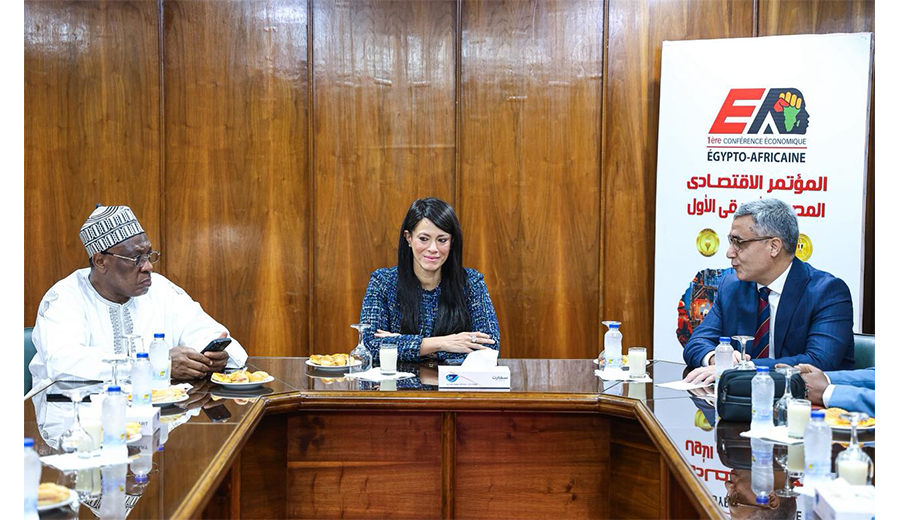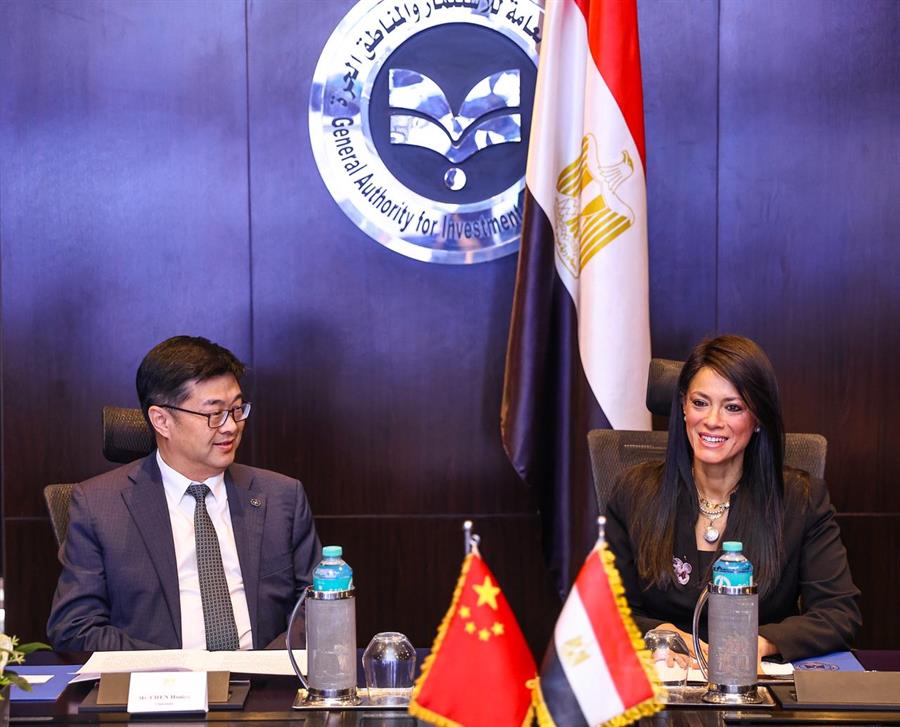H.E. Minister of Planning, Economic Development, and International Cooperation Presents Transport Sector Targets in the 2025/2026 Economic and Social Development Plan Before the House of Representatives

16 April 2025
The plan includes continued enhancement of the quality of services provided to citizens, while ensuring high levels of safety and security
Encouraging private investment in the transport sector and its associated services
H.E. Dr. Rania Al-Mashat, Minister of Planning, Economic
Development, and International Cooperation, presented the targets of the
transport sector within the draft 2025/2026 Economic and Social Development
Plan, part of the medium-term strategy (2025/2026 – 2028/2029), during today’s
session of the House of Representatives, chaired by H.E. Dr. Hanafy El Gebaly
and attended by honorable members of Parliament.
During the session, H.E. Dr. Rania Al-Mashat emphasized the
critical importance of transportation services as a key link in supply
chains—both domestically and internationally. She stated that transport is a
significant cost factor and a vital component of competitive advantage. In
alignment with Egypt’s Sustainable Development Goals “Vision 2030”, the
2025/2026 plan aims to continue enhancing the effectiveness of the transport
sector, a backbone for connecting production hubs with import/export outlets
and logistics centers with distribution and consumption markets across the
country.
She highlighted strategic directions for infrastructure
development and readiness of transportation networks, including expanding the
multimodal transport system to ensure balance and integration across transport
modes, thus promoting efficient use of each. The plan also includes extending
the national transport and utility networks to cover all regions, especially
new urban development areas; upgrading railway services and increasing their
contribution to freight and passenger movement, given their cost-efficiency
compared to road transport.
Additionally, the plan aims to boost river transport
capabilities to leverage its potential as a low-cost service, especially with
the multiple river paths and branches. Continued efforts will enhance the
efficiency of existing seaports and support the establishment of new specialized
ports to stimulate international maritime activity and inbound tourism.
Moreover, the plan includes activating new dry ports in 6th of October City and
those under construction in 10th of Ramadan City, to enhance logistics services
and streamline cargo movement.
The minister also noted the ongoing shift toward electric
transportation (electric buses, cars, metro, monorail, and light rail transit)
to reduce pollution from traditional transport. These efforts run parallel with
continuous service quality improvements and maintaining high safety and
security standards across all transport components, while encouraging private
sector investment in transport and related services. Further, the plan supports
local manufacturing of transport components, such as vehicle and railway car
parts.
H.E. Dr. Rania Al-Mashat reviewed key transport sector
projects, including road, railway, electric rail, inland waterways, seaports,
dry ports, specialized ports, logistics centers, and air port services. Notable
projects include the completion of the Greater Cairo Ring Road development (110
km), expansion of the Suez/Ain Sokhna Road (60 km), dualization of the
Assiut/Sohag/Red Sea Road (180 km), dualization of the 6th October/Oases Road
(270 km), and development of the Wadi El Natrun/Alamein Road (135 km). For
inter-governorate roads, 32 projects are targeted, with 13 expected to be
completed during the year.
The remaining 19 projects, totaling 1,350 km, include
upgrading the Cairo/Alexandria Agricultural Road (180 km), Benha/Mansoura Road
(73 km), and dualizing the eastern Nag Hammadi/Sohag Agricultural Road (45 km).
Other priorities include enhancing the International Coastal Road (514 km) and
initiating the East Oweinat/Al Kufra Road (375 km). Regarding bridges, 11
projects are set for completion, including four Nile crossings (Darawi in
Aswan, Dairut in Assiut, Al-Fashn in Beni Suef, and a new bridge near the Aswan
Dam), and seven other axes in Qena, Sohag, Assiut, Giza, and central Delta. For
highway bridges, the plan includes completion of the Al-Ayyat/Beni Suef bridge
and eight bridges on the Cairo/Alexandria Agricultural Road.
In dry and land port development, H.E. Dr. Rania Al-Mashat
highlighted a comprehensive plan to build 32 dry ports and logistics centers
nationwide. This includes implementing risk management systems for cross-border
trade, pre-registration of trucks, and upgrading the Salloum land port—doubling
its size and equipping it with state-of-the-art cargo screening tools. For FY
2025/2026, 10 projects will focus on facilitating land and dry port operations,
including Salloum, Taba, Arqeen, Al-Awja, Qustul, Rafah, Ras Hadarba, and the
newly planned Al-Kufra land port. These are complemented by efforts to connect
ports with a centralized monitoring system and ongoing studies on dry ports and
logistics hubs.
For seaports, key goals for Red Sea ports include
constructing the southern quay at Suez Port, launching the Grand Safaga Port
project, and building a 500-meter quay with a yacht marina in Taba. On the
Mediterranean, Alexandria Port development continues with projects like a new
breakwater, and procurement of three tugboats. Similarly, Damietta Port
developments include dredging of navigation channels and turning basins, along
with acquiring four tugboats.
H.E. Dr. Rania Al-Mashat concluded by outlining key
transport sector performance indicators targeted for FY 2025/2026:
•Metro and electric rail daily passenger capacity: 8
million passengers
•Railway daily passenger capacity: 1.4 million passengers
•Annual rail freight capacity: 11 million tons
•River transport freight capacity: 8 million tons
•Seaport cargo handling capacity: 292 million tons
•Length of seaport quays: approx. 70 km
•Number of bridges and tunnels: over 2,500
•Electrified railway signals: 75% of all signals, covering
1,500 km









